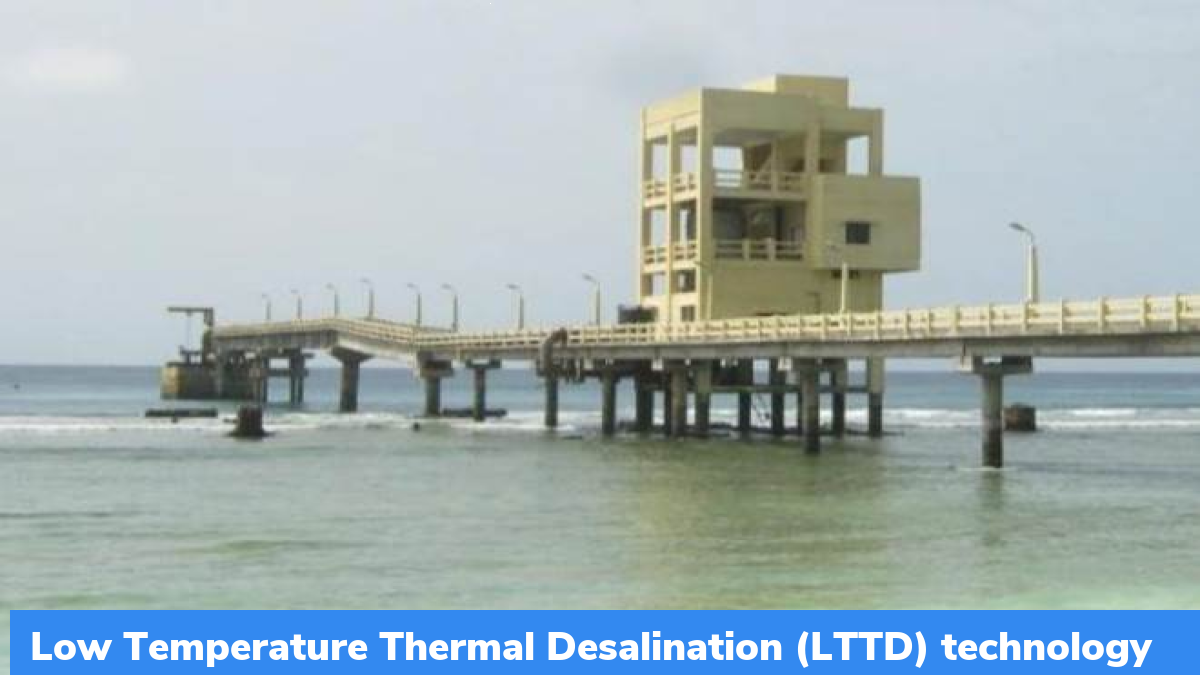What is Low Temperature Thermal Desalination (LTTD) technology?
A Desalination Plant has been developed by National Institute of Ocean Technology (NIOT), that will convert the saline or saltish seawater into drinking water. This technology has been successfully demonstrated in Lakshadweep islands.
Salient Features of the Desalination Plant include:
- The Desalination Plant is based on Low Temperature Thermal Desalination (LTTD) technology.
- The LTTD technology converts the salt or saline water into potable drinking water.
- LTTD technology was suitable for Lakshadweep islands, because there is a temperature difference of 15 degree Celsius between sea surface water and deep-sea water, as required by the technology.
Three desalination plants developed:
NIOT has developed three plants, on the basis of LTTD technology. Plants have been installed and demonstrated at Kavaratti, Agati and Minicoy Islands of Lakshadweep. Each plant has the capacity of 1 Lakh litre of potable water per day. Lakshadweep has target to establishing 6 more LTTD plants at Amini, Chetlet, Kadmat, Androth , Kiltan and Kalpeni islands, each having a capacity of 1.5 lakhs litres per day.
This technology was developed considering that; water is available in plenty across the coastal regions and towns & villages located along the sea shore. However, it is not suitable and cannot be used for drinking because sea water is rich in salt and other minerals content.
About LTTD Technology:
Low-temperature thermal desalination (LTTD) is a technique for desalination. It works on the notion that; water evaporates at lower temperatures, at low pressures. It utilizes vacuum pumps for creating a low pressure and low-temperature environment, resulting into evaporation of water at a temperature gradient of 8 °C. Cooling water is supplied from deep sea depths, which is pumped up to condense evaporated water vapor. We get purified water from the resulting condensate.
Month: Current Affairs - July, 2022
Category: Science & Technology Current Affairs


